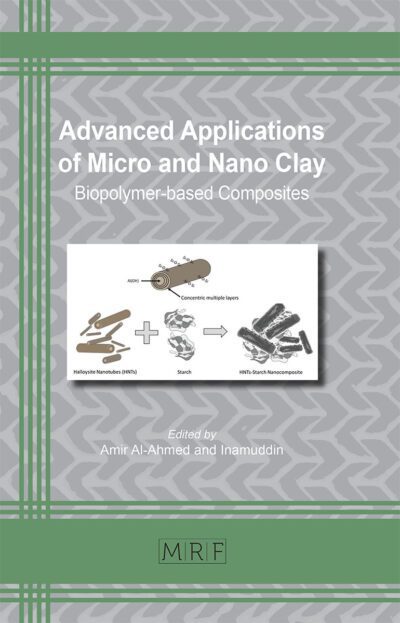Insights on the use of PVB nanocomposites as energy directors in ultrasonic welding of epoxy composites
CILENTO Fabrizia, PALMIERI Barbara, SORRENTINO Luigi, GIORDANO Michele, MARTONE Alfonso
download PDFAbstract. The selection of an adequate coupling film for welding thermoset composites (TSC) is primary for improving the degree of automation in the composite industry. Ultrasonic welding (UW) is a well-established technique for joining composites and has recently been utilized in the aerospace and automotive industries. To achieve an efficient joining, the use of a polymer-based material placed at the welding interface called an energy director (ED) is required. The choice of the coupling layer material is linked to several requirements, such as processing temperature, high adhesion to the TSC adherend and mechanical strength of the resulting welded joints. Most importantly, the viscoelastic dissipation of the ED influences the heating mechanism and the joint behaviour since the hysteresis loops generated during welding are dissipated into viscoelastic heat. In this work, the authors investigated the possibility of using Poly-vinyl-butyral (PVB) reinforced with graphite nanoplatelets (GNPs) as a coupling layer in UW of TSC adherents, showing that an improvement of lap shear strength (LSS) of 80% with respect to neat PVB.
Keywords
Nanocomposites, Damping, Ultrasonic Welding, Graphite Nanoplatelets
Published online 4/19/2023, 10 pages
Copyright © 2023 by the author(s)
Published under license by Materials Research Forum LLC., Millersville PA, USA
Citation: CILENTO Fabrizia, PALMIERI Barbara, SORRENTINO Luigi, GIORDANO Michele, MARTONE Alfonso, Insights on the use of PVB nanocomposites as energy directors in ultrasonic welding of epoxy composites, Materials Research Proceedings, Vol. 28, pp 1851-1860, 2023
DOI: https://doi.org/10.21741/9781644902479-200
The article was published as article 200 of the book Material Forming
![]() Content from this work may be used under the terms of the Creative Commons Attribution 3.0 license. Any further distribution of this work must maintain attribution to the author(s) and the title of the work, journal citation and DOI.
Content from this work may be used under the terms of the Creative Commons Attribution 3.0 license. Any further distribution of this work must maintain attribution to the author(s) and the title of the work, journal citation and DOI.
References
[1] T. Löbel, D. Holzhüter, M. Sinapius, C. Hühne, A hybrid bondline concept for bonded composite joints, Int. J. Adhes. Adhes. 68 (2016) 229-238. https://doi.org/10.1016/j.ijadhadh.2016.03.025
[2] S.D. Thoppul, J. Finegan, R.F. Gibson, Mechanics of mechanically fastened joints in polymer-matrix composite structures-a review, Compos. Sci. Technol. 69 (2009) 301-329. https://doi.org/10.1016/j.compscitech.2008.09.037
[3] J.R. Vinson, Adhesive bonding of polymer composites, Polym. Eng. Sci. 29 (1989) 1325-1331. https://doi.org/10.1002/pen.760291904
[4] Z. Zhang, X. Wang, Y. Luo, Z. Zhang, L. Wang, Study on heating process of ultrasonic welding for thermoplastics, J. Thermoplast. Compos. Mater. 23 (2010) 647-664. https://doi.org/10.1177/0892705709356493
[5] M. Hou, A. Beehag, Q. Yuan, Welding techniques for polymer or polymer composite components, Google Patents, 25-Nov-2004.
[6] I.F. Villegas, Ultrasonic welding of thermoplastic composites, Front. Mater. 6 (2019) 291. https://doi.org/10.3389/fmats.2019.00291
[7] E. Tsiangou, S. Teixeira de Freitas, I. Fernandez Villegas, R. Benedictus, Investigation on energy director-less ultrasonic welding of polyetherimide (PEI)- to epoxy-based composites, Compos. Part B Eng. 173 (2019) 107014. https://doi.org/10.1016/j.compositesb.2019.107014
[8] C.J. Nonhof, M. Riepen, A.W. Melchers, Estimates for process conditions during the vibration welding of thermoplastics, Polym. Eng. Sci. 36 (1996) 2018-2028. https://doi.org/10.1002/pen.10597
[9] C. Hopmann, A. van Aaken, Ultrasonic welding of polyamide-influence of moisture on the process relevant material properties, Weld. World 58 (2014) 787-793. http://doi.org/10.1007/s40194-014-0158-3
[10] J. Wang, X. Jin, C. Li, W. Wang, H. Wu, S. Guo, Graphene and graphene derivatives toughening polymers: Toward high toughness and strength, Chem. Eng. J. 370 (2019) 831-854. https://doi.org/10.1016/j.cej.2019.03.229
[11] Y.T. Park, Y. Qian, C. Chan, T. Suh, M.G. Nejhad, C.W. Macosco, A. Stein, Epoxy toughening with low graphene loading, Adv. Funct. Mater. 25 (2015) 575-585. https://doi.org/10.1002/adfm.201402553
[12] J. Wang, C. Li, X. Zhang, L. Xia, X. Zhang, H. Wu, S. Guo, Polycarbonate toughening with reduced graphene oxide: toward high toughness, strength and notch resistance, Chem. Eng. J. 325 (2017) 474-484. https://doi.org/10.1016/j.cej.2017.05.090
[13] ASTM D 790-17, Standard Test Methods for Flexural Properties of Unreinforced and Reinforced Plastics and Electrical Insulating Materials1, 2017.
[14] G. Menges, H. Potente, Studies on the weldability of thermoplastic materials by ultrasound, Weld. World 9 (1971) 46-58.

































